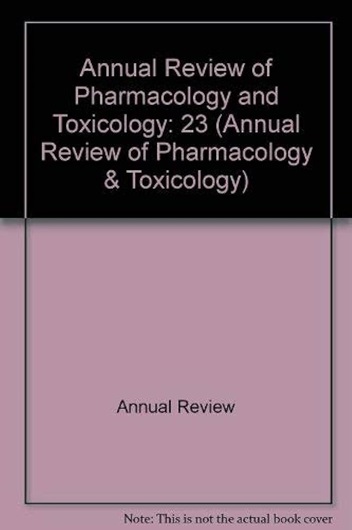Lipid-Dependent Regulation of Ion Channels and G Protein-Coupled Receptors: Insights from Structures and Simulations.
IF 11.2
1区 医学
Q1 PHARMACOLOGY & PHARMACY
Annual review of pharmacology and toxicology
Pub Date : 2020-01-08
DOI:10.1146/annurev-pharmtox-010919-023411
引用次数: 92
Abstract
Ion channels and G protein-coupled receptors (GPCRs) are regulated by lipids in their membrane environment. Structural studies combined with biophysical and molecular simulation investigations reveal interaction sites for specific lipids on membrane protein structures. For K channels, PIP2 plays a key role in regulating Kv and Kir channels. Likewise, several recent cryo-EM structures of TRP channels have revealed bound lipids, including PIP2 and cholesterol. Among the pentameric ligand-gated ion channel family, structural and biophysical studies suggest the M4 TM helix may act as a lipid sensor, e.g., forming part of the binding sites for neurosteroids on the GABAA receptor. Structures of GPCRs have revealed multiple cholesterol sites, which may modulate both receptor dynamics and receptor oligomerization. PIP2 also interacts with GPCRs and may modulate their interactions with G proteins. Overall, it is evident that multiple lipid-binding sites exist on channels and receptors that modulate their function allosterically and are potential druggable sites. Expected final online publication date for the Annual Review of Pharmacology and Toxicology, Volume 60 is January 6, 2020. Please see http://www.annualreviews.org/page/journal/pubdates for revised estimates.离子通道和G蛋白偶联受体的脂质依赖性调节:结构和模拟的见解。
离子通道和G蛋白偶联受体(gpcr)在其膜环境中受脂质调控。结构研究结合生物物理和分子模拟研究揭示了膜蛋白结构上特定脂质的相互作用位点。对于K通道,PIP2在调控Kv和Kir通道中起关键作用。同样,最近几个TRP通道的低温电镜结构揭示了结合的脂质,包括PIP2和胆固醇。在五聚体配体门控制离子通道家族中,结构和生物物理研究表明M4 TM螺旋可能具有脂质传感器的作用,例如,形成GABAA受体上神经甾体结合位点的一部分。gpcr的结构揭示了多个胆固醇位点,这可能调节受体动力学和受体寡聚化。PIP2也与gpcr相互作用,并可能调节它们与G蛋白的相互作用。总的来说,很明显,在通道和受体上存在多个脂质结合位点,这些位点可以变构调节它们的功能,并且是潜在的药物结合位点。《药理学和毒理学年度评论》第60卷的最终在线出版日期预计为2020年1月6日。修订后的估计数请参阅http://www.annualreviews.org/page/journal/pubdates。
本文章由计算机程序翻译,如有差异,请以英文原文为准。
求助全文
约1分钟内获得全文
求助全文
来源期刊
CiteScore
27.80
自引率
0.00%
发文量
53
期刊介绍:
Since 1961, the Annual Review of Pharmacology and Toxicology has been a comprehensive resource covering significant developments in pharmacology and toxicology. The journal encompasses various aspects, including receptors, transporters, enzymes, chemical agents, drug development science, and systems like the immune, nervous, gastrointestinal, cardiovascular, endocrine, and pulmonary systems. Special topics are also featured in this annual review.

 求助内容:
求助内容: 应助结果提醒方式:
应助结果提醒方式:


